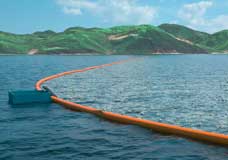
The longest floating structure, spanning 2000 metres, which can passively clean up plastics pollution from the world’s ocean, is expected to be deployed by the second quarter of 2016, according to Boyan Slat, the 20-year old founder and CEO of The Ocean Cleanup.
Founded in 2013, The Ocean Cleanup develops technologies to extract, prevent, and intercept plastic pollution via long floating barriers to let the ocean currents concentrate the plastic itself. It reports a 2014 feasibility study confirming that the passive system is a cost-effective method to remove half the Great Pacific Garbage Patch in 10 years’ time.
In lieu of its project timeline, the feasibility of deployment of the array off the coast of Tsushima, an island located in the waters between Japan and South Korea is currently being researched.
The array will be operational for at least two years, catching plastic pollution before it reaches the shores of the proposed deployment location of Tsushima Island. Tsushima Island is evaluating whether the plastic can be used as an alternative energy source.
The scale of the plastic pollution problem, whereby in the case of Tsushima Island, approximately 1cu m of pollution per person is washed up each year, has led the Japanese local government to seek innovative solutions to the problem.
The deployment will represent an important milestone in The Ocean Cleanup’s mission to remove plastic pollution from the world’s oceans, according to group. Within five years, after a series of deployments of increasing scale, The Ocean Cleanup plans to deploy a 100 km-long system to clean up about half the Great Pacific Garbage Patch, between Hawaii and California.
(PRA)






































